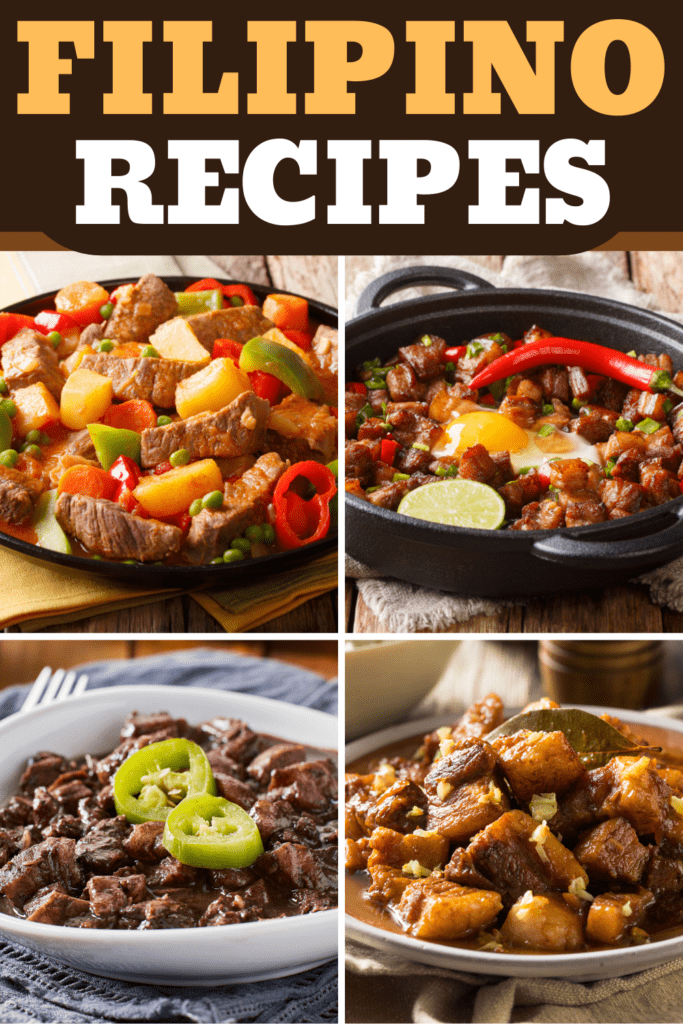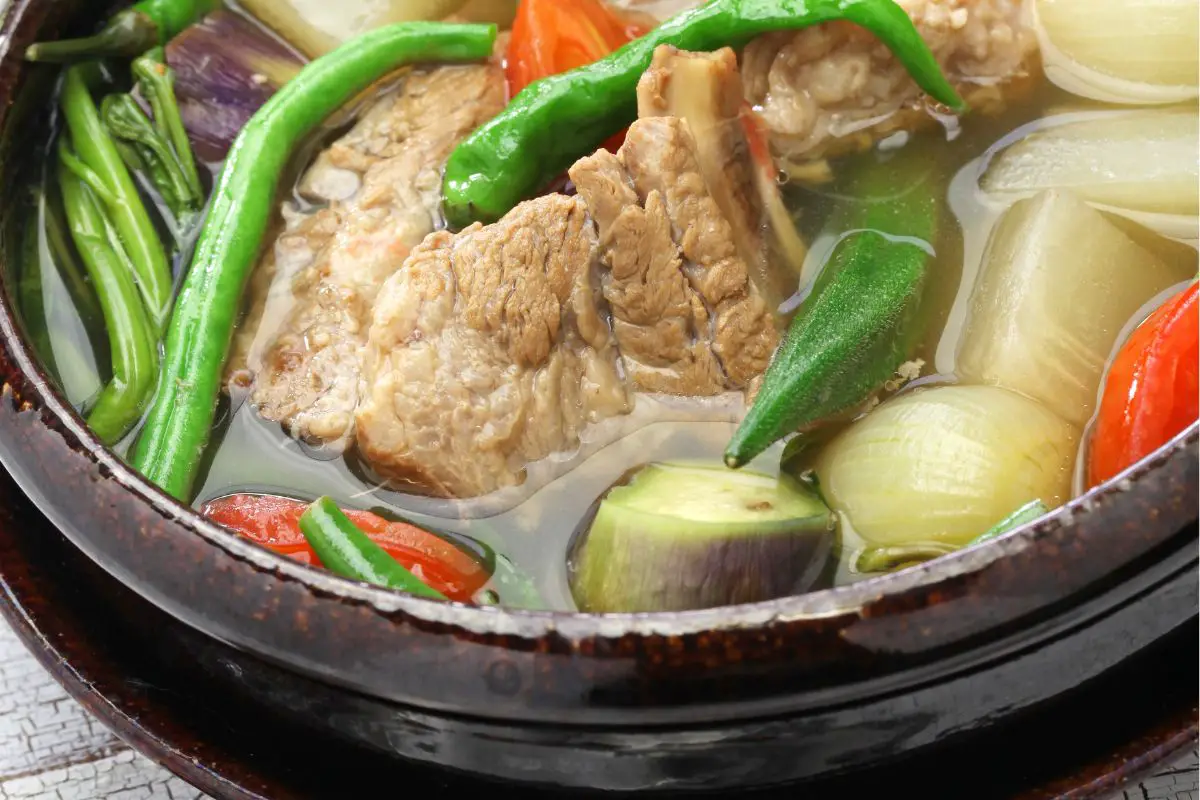Best of the Best : Must-Try Filipino Food Recipes.
Enjoy Typical Filipino Flavors With Easy-To-Follow Recipes
Checking out conventional Filipino cuisine supplies an unique possibility to involve with a rich tapestry of flavors and social stories. As we discover these culinary traditions, one may wonder just how to best bring the heat of Filipino hospitality to their own eating table.

Summary of Filipino Cuisine
Checking out the lively tapestry of Filipino food discloses a rich social heritage affected by different historic and geographical factors. The Philippines, an archipelago of over 7,000 islands, flaunts a varied variety of flavors and cooking strategies. The nation's cooking landscape is shaped by indigenous customs and the impacts of emigration, trade, and migration. Consequently, Filipino cuisine is an unique mix of Malay, Spanish, Chinese, and American components.
Rice works as the cornerstone of Filipino dishes, typically accompanied by an assortment of veggies, meats, and fish and shellfish. Using vibrant tastes is a trademark of the cuisine, with ingredients such as garlic, onions, ginger, and soy sauce playing pivotal functions. The focus on common dining shows the Filipino culture of hospitality and family members ties.
Road food also plays a significant role in the cooking scene, showcasing local ingredients and innovative cooking methods. As the Philippines proceeds to welcome globalization, the combination of standard and modern-day impacts can be seen in contemporary Filipino recipes, better enriching its culinary identification. Filipino food recipes. On the whole, Filipino food is a testament to the country's background, culture, and vibrant spirit
Must-Try Typical Recipes
Filipino cuisine is ideal experienced with its standard recipes, each using a distinct insight right into the country's varied culinary heritage. Among the must-try dishes is Adobo, a mouthwatering stew usually made with chicken or pork, marinated in vinegar, soy sauce, and garlic before being slow-cooked to perfection. Its abundant and appetizing flavor account stands for the heart of Filipino convenience food.
Another famous recipe is Sinigang, a sour soup usually prepared with tamarind, tomatoes, and different vegetables. This recipe can feature pork, shrimp, or fish, and is valued for its refreshing taste and warming up top qualities.
Lechon, a whole roasted pig, is a focal point at Filipino celebrations, understood for its crunchy skin and tender meat. It personifies the festive spirit of Filipino gatherings.
For those desire something sweet, Halo-Halo is a wonderful treat integrating crushed ice, sweetened fruits, jellies, and topped with leche flan and purple yam.
Each of these typical meals encapsulates the essence of Filipino society, welcoming anybody to appreciate the dynamic tastes and abundant history that define the archipelago's culinary landscape.
Step-by-Step Recipes
Cooking authentic Filipino meals in your home can be an enhancing experience that brings the lively flavors of the Philippines into your kitchen. With a wide variety of standard meals to pick from, utilizing step-by-step recipes permits both amateur and experienced chefs to understand the methods and flavors integral to Filipino food.
Begin by choosing a meal that intrigues you, such as adobo, sinigang, or lumpia. Each dish usually consists of an in-depth component listing followed by clear guidelines, assisting you through the food preparation procedure. Begin with preparation, which may involve marinating healthy proteins, chopping veggies, or determining seasonings. This fundamental action guarantees a smooth cooking experience.
As you advance, pay very close attention to food preparation techniques distinct to Filipino food, such as sautéing (ginisa) or stewing (nilaga) These techniques can significantly boost the deepness of taste in your meals. Timing is vital; comply with the recommended cooking times to attain the excellent texture and preference.
Necessary Components and Tips
Regularly, the key to mastering Filipino food lies in understanding and using vital ingredients that define its distinct flavors. Central to lots of recipes are staples like soy sauce, vinegar, garlic, and ginger, which add to the special equilibrium of full-flavored, sour, and sweet notes. Soy sauce functions as a base for sauces and sauces, while vinegar, particularly additional resources walking stick vinegar or coconut vinegar, presents an appetizing brightness that is vital in recipes like adobo.
Rice is a crucial component of Filipino meals, often served together with main dishes to take in savory sauces. For a touch of authenticity, choose jasmine or long-grain rice. Furthermore, using fresh produce such as tomatoes, green beans, and eggplants boosts the dish's vibrancy and nutritional worth.
Do not neglect the significance of herbs and spices, such as bay leaves, lemongrass, and chili peppers, which boost the taste profile. When food preparation, bear in mind that perseverance is essential-- enabling active ingredients to fuse with each other leads to richer flavors. Accept the practice of sampling as you go; this will allow you to change seasonings and achieve the perfect equilibrium that identifies Filipino food.
Serving and Enjoying Filipino Dishes
Comprehending the subtleties of Filipino cuisine expands beyond preparation and components; it encompasses the way dishes are served and enjoyed. The Filipino eating experience is defined by communal sharing, advertising a feeling of togetherness and celebration. Usually, dishes are provided in big servings, permitting diners to engage in a variety of tastes.
Rice, a staple in Filipino meals, is typically served as the foundation whereupon the other meals remainder. Going along with viands, such as adobo, sinigang, or lechon, are positioned in the center of the table, inviting guests to offer themselves. Filipino food recipes. This practice not only fosters a relaxed ambience yet additionally encourages discussions and links among diners

Verdict
In conclusion, conventional Filipino cuisine offers an abundant tapestry of flavors and social significance, welcoming exploration via its varied dishes. The easy-to-follow dishes offered promote the prep work of famous meals, promoting a deeper appreciation for the ingredients and methods involved. Emphasizing public eating, these culinary practices enhance family you can find out more members connections and promote the heat of Filipino hospitality. Involving with this lively cuisine not only improves the dining experience however likewise preserves and commemorates the heritage of the Filipino people.